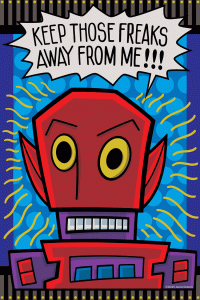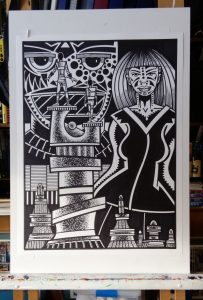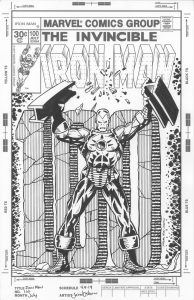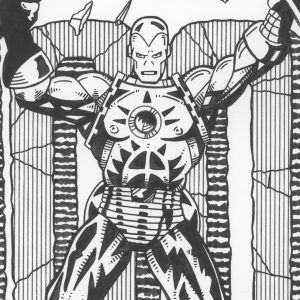For most of my adult life I’ve been a non-fiction reader. Besides comic books that is. In my childhood I read a lot of historical biographies for kids but as I got older, around high school age, I started reading a lot of novels. That lasted through college but sometime in my twenties I switched to reading mostly non-fiction books. I’d read a novel every now and then but I probably read ten non-fiction books for every fiction one. That’s just how my taste ran.
As a comic book collector I have a lot of comic books lying about the place. They can take up a lot of room. As a consequence I decided not to be a book collector. So I would read a book and then pass it on to someone else. I wouldn’t keep it. That way I wasn’t filling up the place with even more stuff.
As a consequence of getting rid of the books I read I took to digital reading as early as I could. Not for my comic books, I still like to read those as physical copies, but for all the prose stuff I would read digitally. I really enjoy reading digitally. Digital books take up a lot less room, I can more easily keep track of my reading, and I can “Collect” books without ever reading them and never feel guilty about it. A physical “To be read” pile of books comes with regrets. I’d to look at the pile and and sigh that I didn’t have enough time to read them all. A digital pile is just some images of book covers on a screen. They’re hardly real at all and so don’t bring up feelings of regret.
Before this summer I hadn’t gotten much reading done at all. Especially novels. For years now I’ve been a member of Amazon Prime and they offer two free digital novels a month for their members. They send you an e-mail with about eight books to choose from and you can download two of them. Despite not reading any of them I’ve been downloading two every month for a couple of years. I figured I might get around to them someday. Someday finally came.
When I work at home on my art I’m usually by myself. I go at my own pace and get done what I can. Part of working is taking breaks. I stand and work so usually I sit down when I want a break. The question is always “What do I do now?” Since I’m by myself I don’t have break room to hang out in and chat with fellow workers so my answers is usually the internet, a quick video game (this is why I like games I can play for ten minutes at a time), or social media. The same stuff as everyone else.
This summer I found my break habit was wearing me down a little. Not physically but mentally. I found I could sit down and putter away with the computer or iPad on the internet, kill ten to twenty minutes, and then not even remember what I was doing. I was mostly reading but what I was reading were short articles and pieces on whatever caught my eye. Nothing I was reading stuck with me. It was all empty reading and it was bringing me down. Plus sometimes it would take five minutes of surfing around to even find something that might be interesting to read. I felt like I was wasting a lot of time on nothing. It wasn’t much of a break.
That’s when I decided to starting reading some of those novels I had been downloading for years. Why not? On my iPad I could read a novel for fifteen minutes as easily as I could read Twitter or Instagram?
So I picked one out from the pile and started reading it. I think I read four novels in about ten days. I was really enjoying myself. They were mostly thrillers with a fantasy or a horror novel thrown in there too. Fun stuff.
One of the things I found myself doing after reading a novel was rating and reviewing it. Amazon has a five star system and I gave out three and four stars for the ones I read plus I wrote a short paragraph about the book. I figure any book I can make it through gets at least three out of five stars but it takes a classic to get five stars from me. If it’s a one or two star book I’m not even going to finish it and therefor I’ll never rate it. That’s my system.
I found I really liked writing a short paragraph about each book. I’m not sure if anyone else will find them helpful but I like them because they remind me what the book was about. I’m sure all of us who are readers have picked up a book and thought to ourselves, “Have I read this one before?” It’s not always easy to remember. Now I can go back and read my own notes about the book to refresh my memory. I find that satisfying.
The one book I gave five stars to was “This Side of Paradise” by F. Scott Fitzgerald. That one is generally considered a classic and I first read it back in my mid-20s but haven’t read it since. I think I may have even liked it more now that I’m in my early 50s so it’s a well deserved classic. It’s funny because I was reading the collected Conan by Robert E. Howard as I also read other things (that Conan book is long!) so that switching between Conan and “Paradise” was quite the roller coaster of reading.
One part of digital reading that I haven’t found a use for yet is the highlighting feature. At any point when reading you can highlight some text and it will save it for you. I’ve highlighted some particular passages that I’ve liked but haven’t found a use for them after that. It’s probably a better feature for a book group or student but hope to someday find something to do with it.





